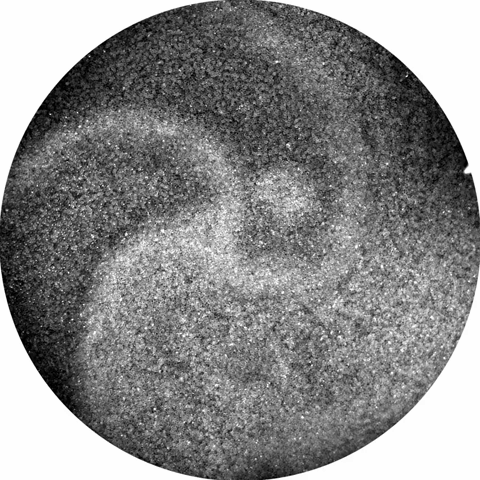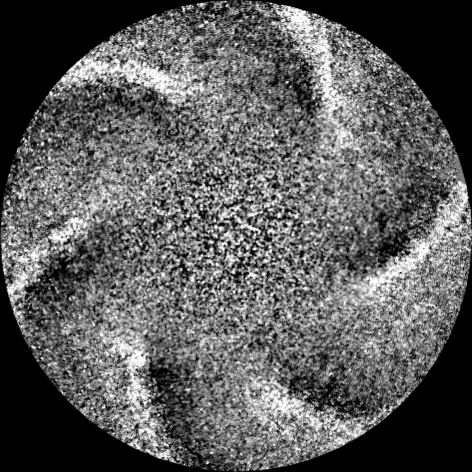Spirals are widely existing in nature: From galaxies
to hurricanes, from the inner structure of a seashell to the atomic
scale magnetic ordering.
The above video shows a three armed rotating
spirals in an agitated thin layer of wet granular matter. We found that
the peculiar 3-armed rotating spirals arise from period tripling (i.e.,
the granular layer collide once with the container every three
vibration cyccles), which leads to spatiotemporal chirality and
consequently the rotating spiral arms. We showed that the periodicity
of the system can be understood considering the granular layer as
a single particle bouncing inelastically in the container. |
At the boundary between liquid- and gas-like state, another type of pattern as shown above emerges. The dark particles are tracers to illustrate the flow field in the system.
Different from the type shown on the left, the arms are density waves
(brighter ~ denser), they are rotationally symmetric with respect to
the center of the cylindrical container, and the number of arms may
range from 2 to 8.
The questions are:
- Why does the density fronts emerge? What determines the length, rotation speed and shape of the arms?
|
![]() German
German 



